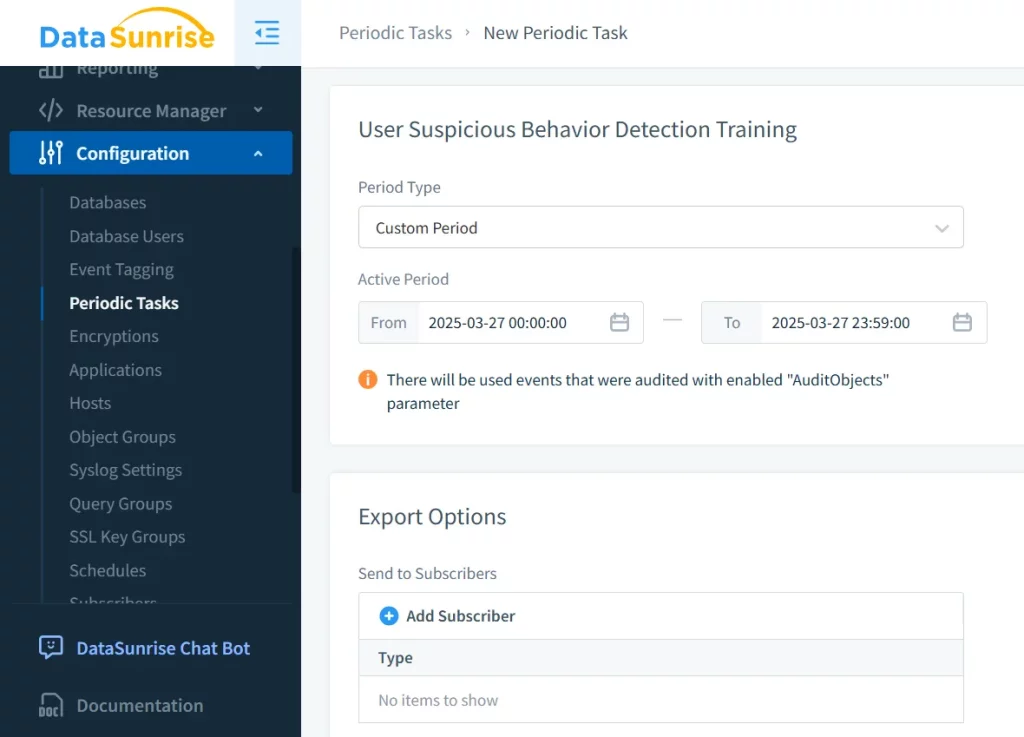How to Manage Data Compliance for MySQL
Introduction
Data compliance is crucial in today’s digital landscape, especially when handling sensitive information. For businesses using MySQL, managing compliance with regulations such as GDPR, HIPAA, PCI-DSS, and SOX is an ongoing responsibility. IBM’s 2023 report revealed the average cost of a data breach reached $4.45 million, making it clear that failing to meet compliance requirements can lead to costly consequences. MySQL documentation offers extensive guidelines on securing your MySQL environment. In this article, we will explore key compliance requirements for MySQL, its built-in security and auditing features, and how third-party tools like DataSunrise can enhance your compliance management.
Key Compliance Requirements for MySQL
MySQL is commonly used for storing sensitive data, including personal, health, or financial information. To ensure data is properly protected and compliant with various regulations, organizations must implement several measures.
GDPR (General Data Protection Regulation)
Under GDPR, businesses must protect the privacy and personal data of individuals within the European Union. Key requirements include access control, audit trails, and data encryption. MySQL can support GDPR compliance by using features like role-based access control (RBAC) and data encryption.
HIPAA (Health Insurance Portability and Accountability Act)
HIPAA mandates the protection of health-related information. This includes stringent access control, audit trails, and real-time monitoring to ensure the confidentiality and integrity of patient data. In MySQL, role-based access controls and auditing features help track and protect health data.
PCI-DSS (Payment Card Industry Data Security Standard)
PCI-DSS is focused on protecting payment card information. It requires encryption, authentication, and robust logging mechanisms. MySQL can meet these needs with SSL/TLS encryption for data in transit, and binary logs to track any changes to payment information.
SOX (Sarbanes-Oxley Act)
SOX requires businesses to maintain internal controls and audit logs for financial data. MySQL supports SOX compliance by providing tools for audit trails, user access logs, and change tracking. These features ensure that any changes to financial data can be reviewed and verified.
MySQL’s Built-In Security and Auditing Features
MySQL offers a variety of built-in tools to help businesses meet compliance requirements. These include role-based access control, logging mechanisms, and encryption options. Let’s dive into each of these features in detail.
Role-Based Access Control (RBAC)
MySQL uses role-based access control (RBAC) to limit what users can see and do. By defining roles and assigning them to users, you can ensure that only authorized individuals have access to sensitive data.
CREATE ROLE auditor; GRANT SELECT ON sensitive_db.* TO auditor; GRANT auditor TO 'john'@'localhost'; SET DEFAULT ROLE auditor FOR 'john'@'localhost';
| Role | User | Database | Privileges |
|---|---|---|---|
| auditor | john | sensitive_db | SELECT |
This SQL code restricts a user to read-only access to specific databases, which is important for limiting exposure of sensitive data.
Logging User Activity
MySQL can log all SQL queries executed on the database, helping track any potentially harmful or unauthorized actions. To enable general query logging:
SET GLOBAL general_log = 'ON'; SET GLOBAL log_output = 'FILE';
| Variable | Value |
|---|---|
| general_log | ON |
| log_output | FILE |
This ensures all SQL queries are logged to a file for later review, which is useful for auditing and compliance purposes. You can find more information on enabling and configuring MySQL logging.
Binary Logs
Binary logs record all changes made to MySQL databases, including inserts, updates, and deletes. This is particularly useful for compliance audits and data recovery. You can view and extract logs using the mysqlbinlog command:
mysqlbinlog --start-datetime="2025-01-01 00:00:00" --stop-datetime="2025-01-31 23:59:59" /var/lib/mysql/binlog.000001
| Log File | Event Type | Date/Time | Query |
|---|---|---|---|
| binlog.000001 | Query | 2025-01-01 12:00:00 | INSERT INTO customers VALUES (1, ‘Alice Johnson’, ‘alice@email.com’); |
These logs are essential for tracking modifications made to sensitive financial or personal data, ensuring compliance with regulations like SOX and GDPR.
Data Encryption
Encryption is a key part of ensuring data security and compliance. MySQL supports Transparent Data Encryption (TDE) to encrypt stored data and SSL/TLS to secure connections between the database and applications.
ALTER TABLE users ENCRYPTION='Y';
| Table | Encryption Status |
|---|---|
| users | Enabled |
For securing data in transit, SSL/TLS can be configured to encrypt communication between MySQL and client applications.
Native MySQL Auditing: SQL Logs, Binary Logs, and Enterprise Tools
While MySQL offers various native tools to aid compliance, its Community Edition lacks a comprehensive audit log. However, it is still possible to create basic auditing solutions using SQL triggers and binary logs.
Manual Audit Table and Trigger
One way to track changes is by creating an audit table and setting up triggers to log any modifications made to sensitive data.
CREATE TABLE audit_log (
id INT AUTO_INCREMENT PRIMARY KEY,
user VARCHAR(100),
action_type VARCHAR(50),
old_data TEXT,
new_data TEXT,
change_time TIMESTAMP DEFAULT CURRENT_TIMESTAMP
);
CREATE TRIGGER before_update_customers
BEFORE UPDATE ON customers
FOR EACH ROW
INSERT INTO audit_log (user, action_type, old_data, new_data)
VALUES (CURRENT_USER(), 'UPDATE',
CONCAT('Email: ', OLD.email),
CONCAT('Email: ', NEW.email));
| id | user | action_type | old_data | new_data | change_time |
|---|---|---|---|---|---|
| 1 | john | UPDATE | Email: alice@email.com | Email: alice@newemail.com | 2025-01-01 12:30:00 |
This trigger records every change made to customer email addresses, ensuring that these changes can be reviewed during audits.
MySQL Enterprise Audit Plugin
For MySQL Enterprise Edition users, the audit log plugin offers more robust auditing capabilities. This plugin logs all access in an XML format, providing detailed records for compliance audits.
INSTALL PLUGIN audit_log SONAME 'audit_log.so'; SET GLOBAL audit_log_policy = 'ALL';
| Event Type | User | Action | Time |
|---|---|---|---|
| LOGIN | john | SUCCESS | 2025-01-01 12:30:00 |
This provides an easy way to track and log all user activity in MySQL, supporting compliance with GDPR, HIPAA, PCI-DSS, and SOX.
Strengthening MySQL Compliance with DataSunrise
While MySQL offers foundational compliance tools, DataSunrise elevates MySQL compliance through automated discovery, intelligent audit controls, and seamless security integration across environments. It is more than a masking tool—it is a zero-touch compliance platform designed for full-spectrum visibility and regulatory alignment.
What Makes DataSunrise Different?
DataSunrise combines autonomous protection, no-code policy automation, and context-aware security to help organizations reduce risk and accelerate compliance efforts.
Intelligent Compliance Orchestration
DataSunrise introduces Compliance Autopilot, a self-adjusting framework that keeps pace with evolving regulations such as GDPR, HIPAA, PCI DSS, SOX, and more. Its machine learning audit rules adapt to user behavior and generate alerts or actions based on anomaly detection.
- Continuous Regulatory Calibration: Keeps your data security aligned with updated global and regional compliance frameworks.
- Auto-Discover & Classify Sensitive Data: From structured databases to unstructured content like documents and OCR-scanned images.
Seamless Integration with Hybrid and Cloud Environments
DataSunrise supports over 40 database platforms, including traditional databases, NoSQL systems, data lakes, and cloud-native storage services (e.g., AWS S3, Azure Blob Storage, Google Cloud Storage). It can be deployed in non-intrusive modes (sniffer, proxy, or log trailing) for minimal disruption.
- Flexible Deployment Modes: Cloud, on-premises, and hybrid configurations.
- Instant Go-Live: Enterprise environments can deploy DataSunrise in days without reconfiguring existing systems.
Real-Time Behavior Analytics
DataSunrise enables User and Entity Behavior Analytics (UEBA), detecting deviations from normal activity and responding in real time:

Key Benefits for MySQL Users
- Autonomous Compliance Alignment across multiple frameworks.
- Efficient Compliance Workflows that reduce manual oversight.
- Streamlined Deployment with support for all major platforms and storage types.
- Enhanced Security Coverage including real-time monitoring, anomaly detection, and auto-masking.
- Audit-Ready Evidence Generation with comprehensive tracking and export capabilities.
DataSunrise isn’t just a security tool—it’s a full-stack compliance platform tailored for growing regulatory demands. To see how it integrates with MySQL and scales across your entire data architecture, book a demo or download the platform and try it in your environment.
Conclusion
Managing MySQL compliance is an ongoing process that involves securing sensitive data, tracking changes, and ensuring compliance with regulatory standards. While MySQL’s built-in features like RBAC, logging, and encryption form a solid foundation, third-party tools like DataSunrise provide advanced capabilities for automated compliance management, dynamic masking, and real-time monitoring.
For more information on how DataSunrise can help streamline your MySQL compliance efforts, book a demo or download the tool to explore its features further.
